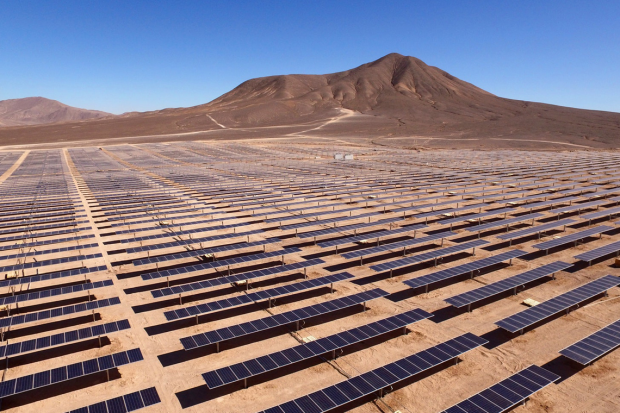As businesses strive to reduce operational costs, they often look for alternatives to traditional energy sources. With the increasing cost of electricity and other forms of business energy, seeking out lower-cost options can be a great way to cut back on overhead expenses. This article will explore some of the alternative energy sources available that could help your business save money while staying green. From solar and wind power to geothermal and biofuels, we’ll look at the pros and cons of each option so you can make an informed decision.

With the right energy sources in place, your business can reduce costs while keeping its environmental impact low. By 2025, the global market for renewable energy is anticipated to reach $2.15 trillion, providing tremendous opportunities for business expansion. Understanding your business electricity bills, the fluctuating prices of energy and the renewable sources available to you can help your business make better decisions about its energy needs and how to meet them. Let’s explore some of the most popular alternative energy sources available and how they can benefit your business:
Exploring Options for Low-Cost Alternatives
- Solar Power: Solar energy is one of the most popular renewable sources of energy and is increasingly attractive to businesses. With the cost of solar panels declining significantly in recent years, installing a rooftop array or ground-mounted system can be a great long-term investment for your business. In addition, solar power has no emissions and is entirely renewable, so it can help reduce your business’s environmental footprint.
- Wind Power: Wind turbines are becoming a popular choice for businesses looking to generate their own energy in an environmentally-friendly way. Wind power has no emissions, is entirely renewable, and the cost of installation and maintenance is relatively low. Additionally, wind turbines require minimal upkeep, which can be a great long-term investment for businesses.
- Geothermal Energy: If your business is built on land with underground heat sources, geothermal energy could be an excellent low-cost energy source. Geothermal systems use the Earth’s natural temperature to generate electricity or provide heating and cooling solutions. Geothermal energy is also completely renewable and has no emissions, making it an attractive choice for businesses looking to reduce their environmental impact.
- Biofuels: For businesses that require a steady supply of fuel, biofuel may be the best low-cost alternative to traditional sources. Biofuel is derived from renewable sources such as plant and animal byproducts, making it both environmentally friendly and cost-effective. Additionally, biofuel is typically less expensive than traditional petroleum-based fuels, providing savings to businesses in the long run.
When evaluating alternative energy sources for your business, consider what type of energy you need and what type of environmental impact your chosen source will have. By researching the various low-cost alternatives to traditional sources of business energy, you’ll be able to determine which sources are best suited for your needs. With the right energy solutions in place, your business can reduce its costs while staying green.
Assessing the Financial Benefits of Low-Cost Alternatives
In addition to reducing your business’s environmental footprint, switching to low-cost alternatives can also lead to significant financial savings. The long-term payoff associated with alternative energy sources often more than makes up for the initial installation cost. Keep reading to explore some of the potential financial benefits to businesses making the switch.
Comparing Costs to Traditional Sources of Business Energy
Generally speaking, alternative energy sources are much cheaper than traditional sources. A solar array or wind turbine can often pay for itself within 5-10 years and have a lifespan of up to 20 years, while traditional sources will need to be replaced more often.
Evaluating Potential Savings From Low-Cost Alternatives
By exploring the potential savings associated with low-cost alternatives, businesses can determine the most cost-effective sources. For example, solar and wind power typically provide more energy than is necessary to operate a business, so any excess electricity generated can be sold back to the grid. Additionally, geothermal systems often require less maintenance than traditional heating and cooling methods, leading to long-term savings on utility bills.
Tax Incentives for Investing in Low-Cost Alternatives
Many governments offer tax incentives for businesses that invest in renewable energy sources. These incentives can reduce the upfront cost of switching to alternative energy and make it more feasible for businesses of all sizes.
By weighing up the financial benefits of low-cost alternatives, businesses can decide which sources are most suitable for their needs. Considering installation costs, potential tax incentives, and long-term savings, businesses can make the switch to alternative energy sources with confidence.
Developing a Sustainable Investment Plan
Once a business has decided to switch to low-cost alternatives, it must develop a sustainable investment plan. This involves researching the various funding sources available and determining how much money is needed for each project. Additionally, businesses should consider how long it will take for the investments in alternative energy sources to pay off.
Identifying Sources of Funding
Before investing in alternative energy sources, businesses should investigate the various sources of funding available. This includes government grants, private loans and investors, and crowdfunding platforms. Each source of financing has different requirements and timelines for repayment, so it is important to choose one that best suits your business’s needs.
Establishing a Budget and Timetable
Once the source of funding has been identified, businesses must develop a budget and timeline for their investment plan. This plan should include estimated costs for each project and the expected timeframe for returns on investments.
Monitoring Progress and Staying Committed
Businesses must continue to monitor the progress of their investments in alternative energy sources. They should be prepared to make adjustments as necessary and stay committed to the original plan. By setting realistic goals and tracking progress, businesses can ensure they get the most out of their investments in low-cost alternatives.
In Conclusion
We must face the fact that traditional energy sources are becoming increasingly expensive, and businesses should consider investing in alternative sources as soon as possible. By researching potential savings, evaluating tax incentives, and developing a sustainable investment plan, companies can confidently switch to low-cost alternatives. Taking these steps now can help ensure long-term financial success for the business.



